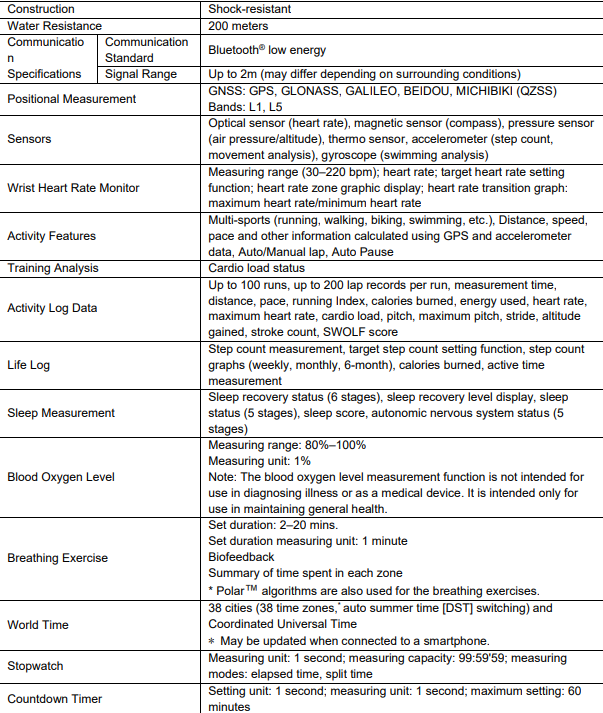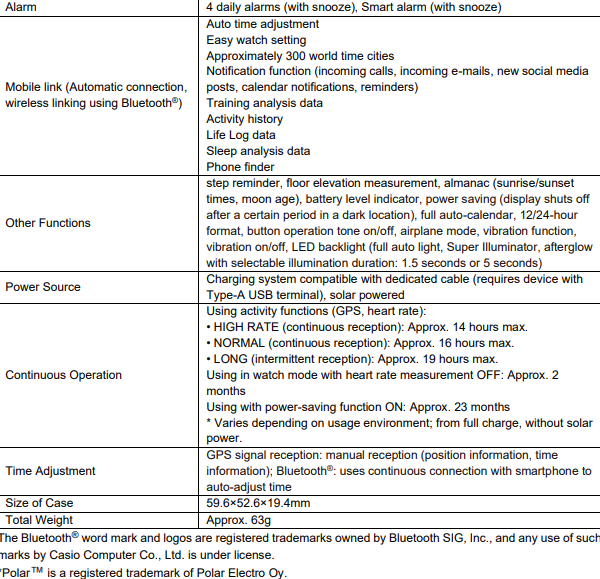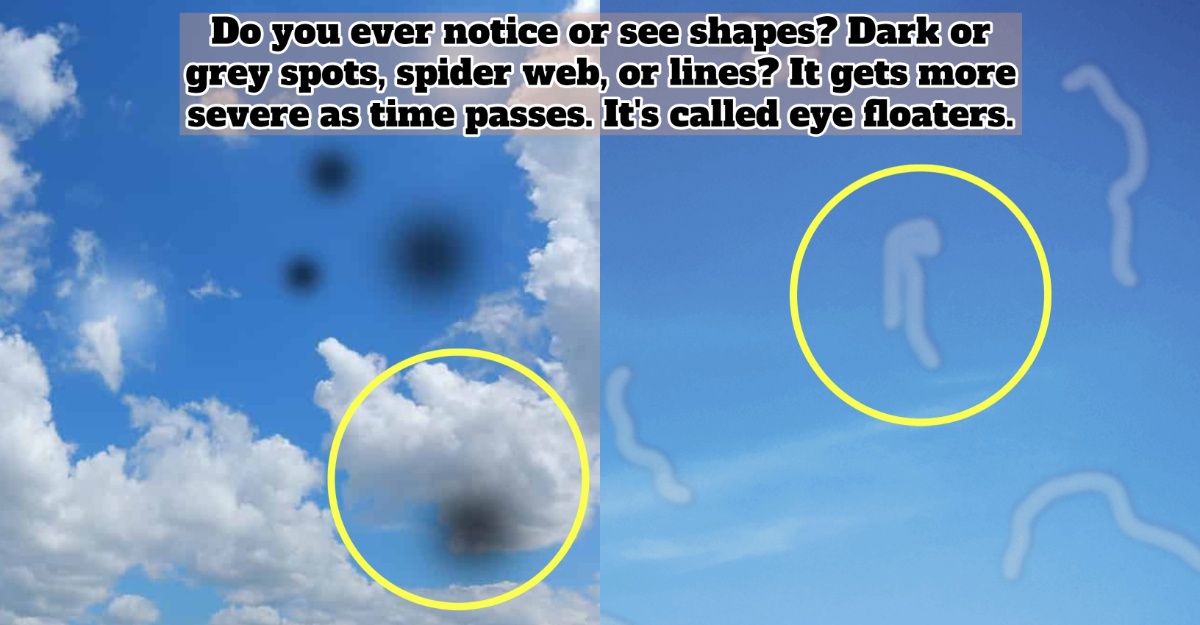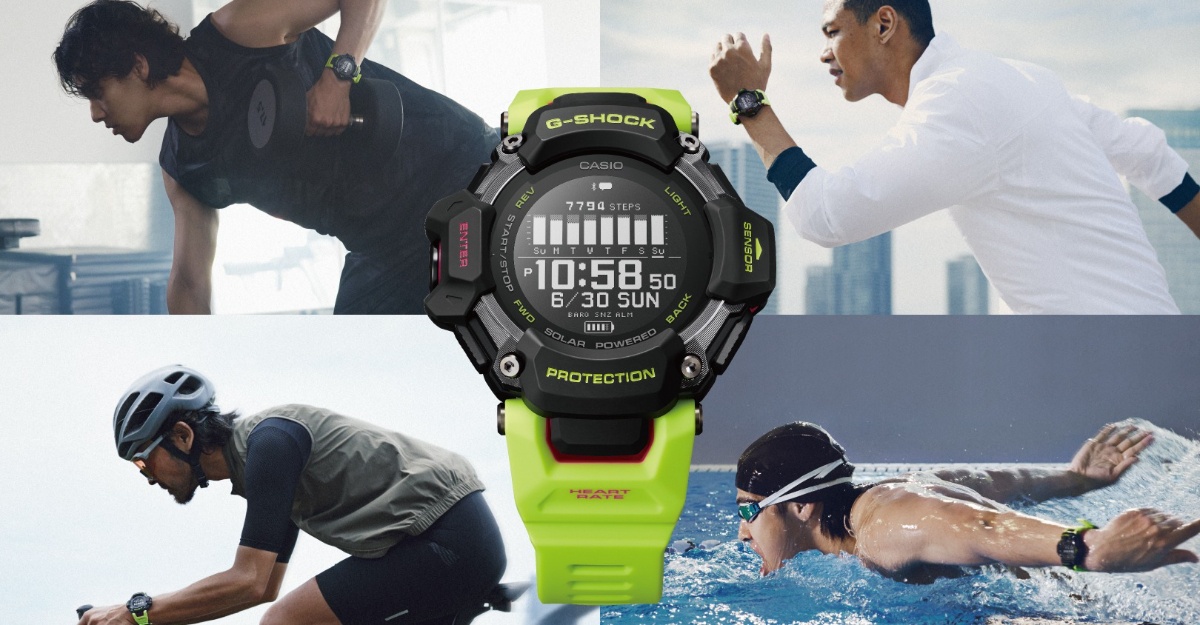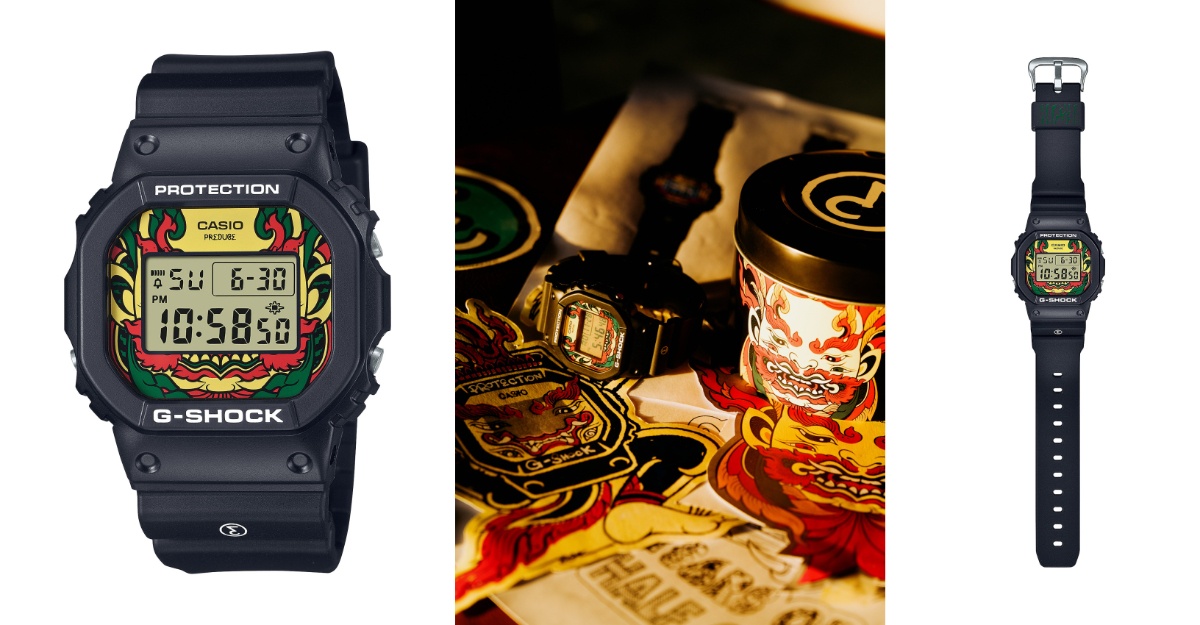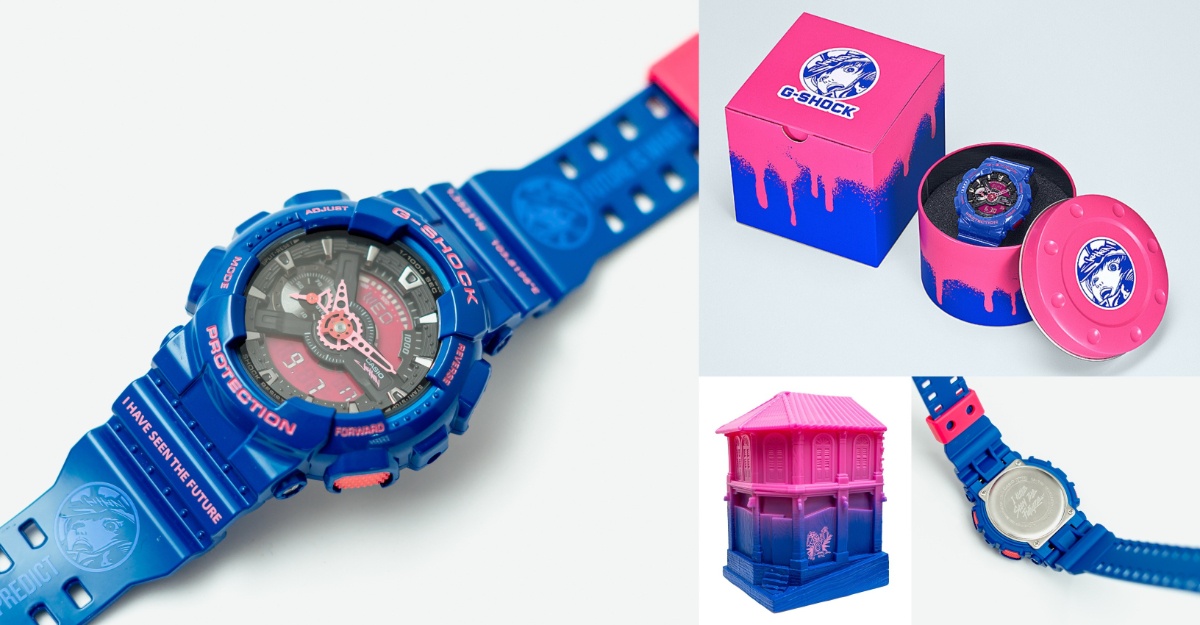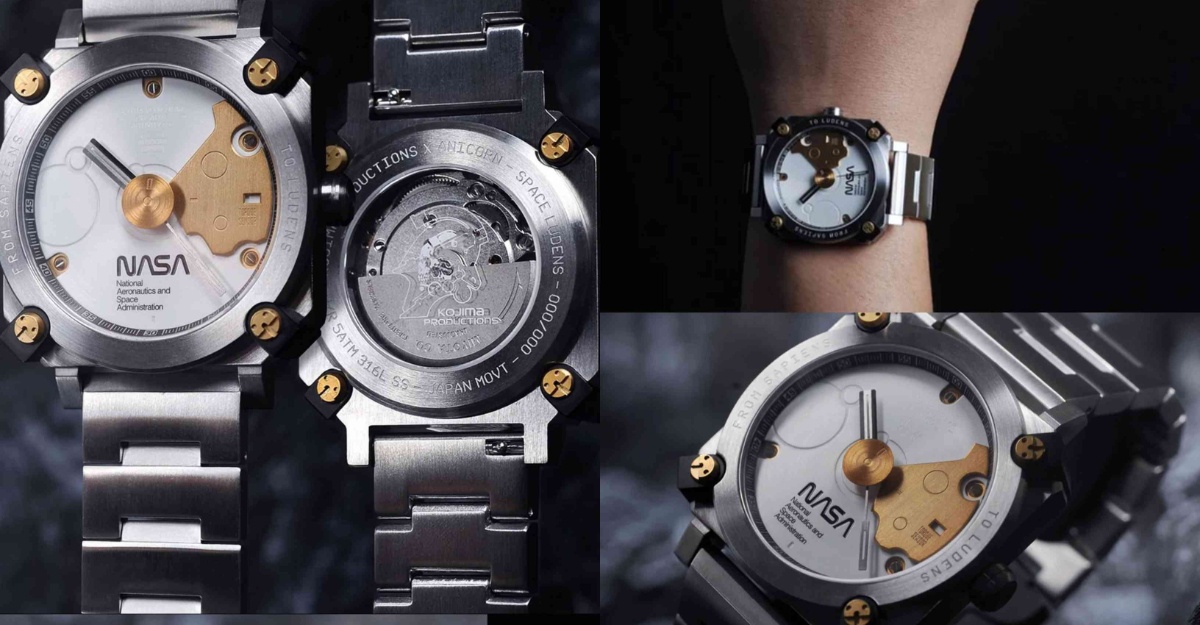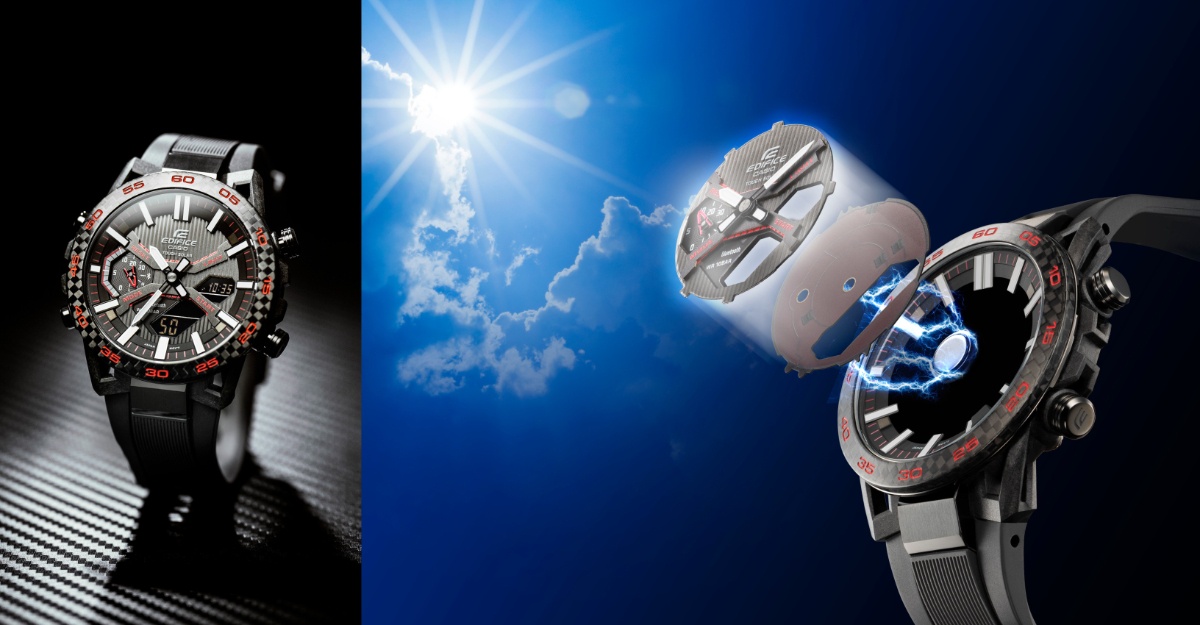Casio Malaysia has released GBD-H2000, the new addition to the sports-driven G-SQUAD line in the G-SHOCK family of shock-resistant watches. The new GBD-H2000 delivers support for multiple sports and boasts a lighter weight to ensure an even more comfortable fit. The new watch will be available in four models.
The shock-resistant GBD-H2000 is equipped with GPS functionality and six sensors to provide support for a wide range of sports activities, yet is 38% lighter than the previous model, the GBDH1000. Casio achieved the lighter weight design by creating a more compact case with a built-in GPS antenna and carbon fiber-reinforced case back. The result is an even more comfortable fit on the wrist.
The new watch is equipped with GPS functionality and an optical sensor to measure heart rate, as well as a compass, altitude/air pressure sensor, thermo sensor, accelerometer, and gyroscope. These high-end technologies enable measurement of distance, speed, pace, and more to support activities from running and biking to swimming.
Training analysis functions are included along with these activity measurements. Algorithms developed by Polar Electro Oy, a pioneer in the industry which has spent nearly 50 years perfecting the art of personalized guidance in fitness, sport and health, are used to measure the burden on the heart and lungs, analyze ratios of energy used separately for carbohydrates, proteins, and fats, and perform sleep tracking. Pairing the watch with the dedicated CASIO WATCHES app allows users to review training data from the watch in greater detail, accessing activity logs, advice on improving sleep and more. Solar-assisted charging is also included to improve ease of use, offering time display powered by solar charging* even when the battery runs low.
*When charged about eight hours every day under indoor fluorescent lighting (500 lux), and charged at window side on a sunny day for two hours in a week (10,000 lux).
The case, bezel, and band are made with biomass plastics, an eco-friendly material produced using raw materials from castor seeds and corn.


■ Support for multiple sports
Support for eight different activities is included: running, biking, open water swimming, pool swimming, walking, trail running, gym workouts, and interval training. The watch is equipped with GPS functionality and an optical sensor capable of measuring heart rate, as well as a compass, altitude/air pressure sensor, thermo sensor, accelerometer, and gyroscope. According to the activity selected, these high-end technologies enable measurement of heart rate, distance, and speed as well as tracking of stroke type and number of turns in the pool and more.

■ Lighter weight
Employing a more compact case with a built-in GPS antenna and carbon fiber-reinforced case back, the GBD-H2000 is 38% lighter than the previous GBD-H1000. This design also offers an even more comfortable fit that does not interfere with arm motion.

■ Polar™ Algorithms for Training analysis
Fitness level and cardio load
Assesses fitness level by maximal oxygen uptake (VO2max) when running, measures burden on the heart and lungs according to the workout duration and intensity, and provides a wide range of other data.
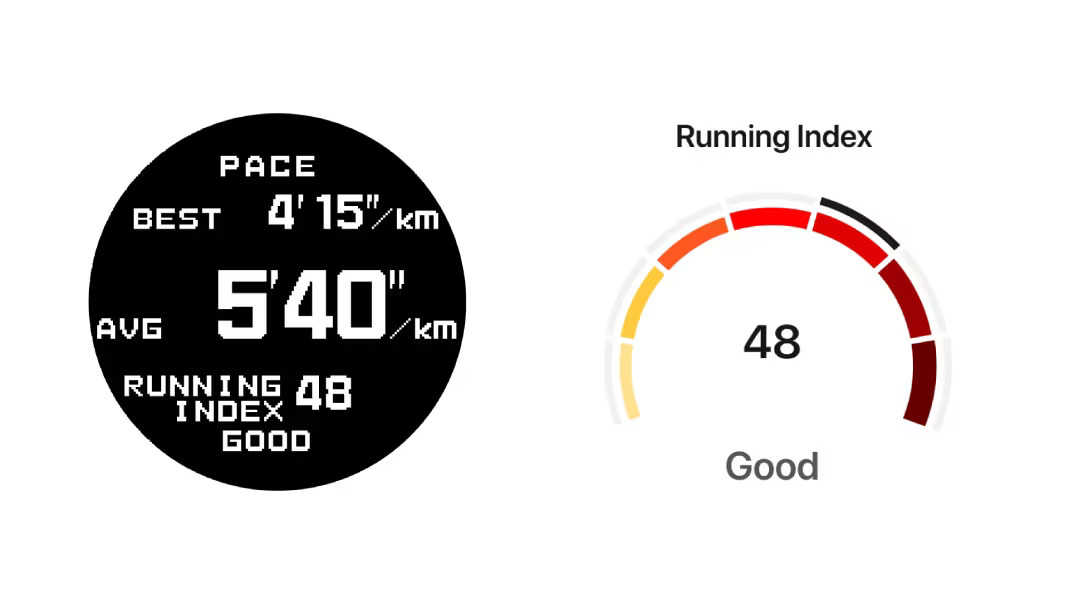
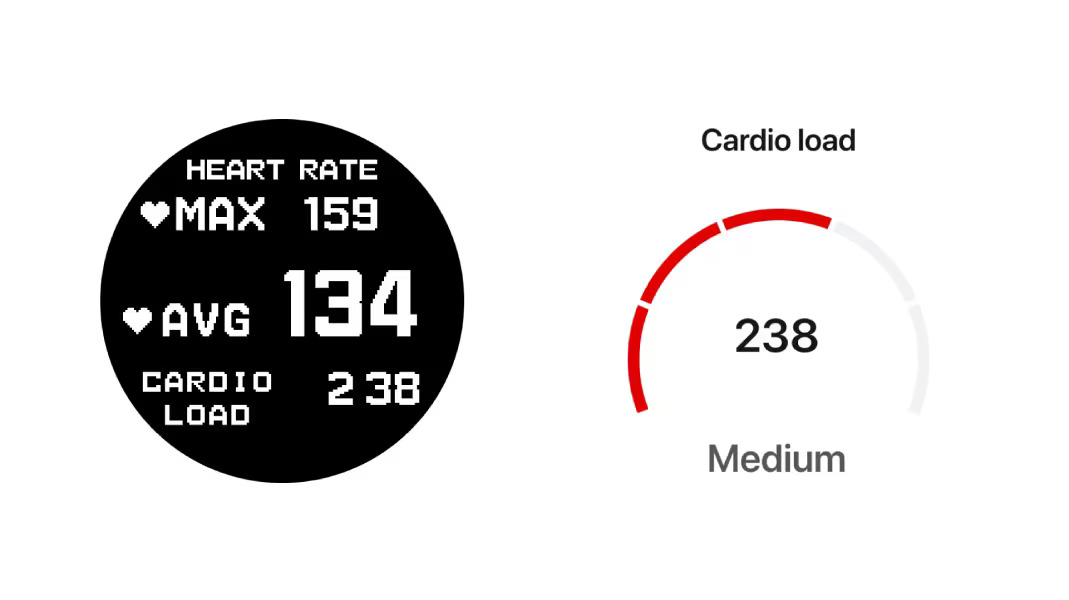
Energy used
Calculates carbohydrates, proteins, and fats as percentages of calories burned. Useful for determining energy source intakes during training periods and workout intensity settings to help users meet goals.

Sleep recovery level
Tracks sleep to assess how well users recover mentally and physically overnight from workouts and other demands of the day. The CASIO WATCHES app provides more detailed information and advice, including sleep stage graphs and tips for the day.
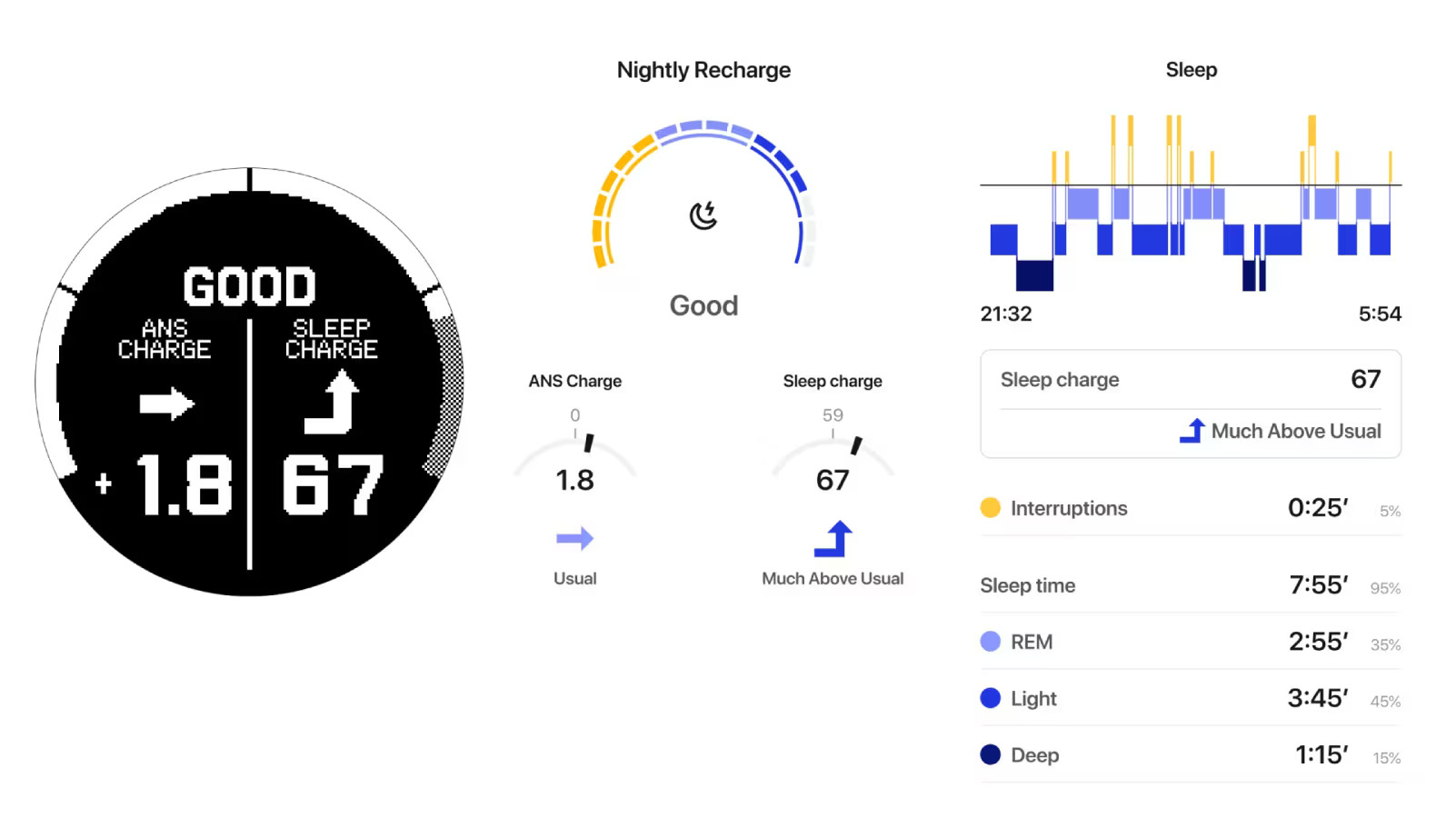
Solar-assisted charging
Use USB charging for training functions such as GPS tracking and heart rate monitor, as well as smart functions such as notifications and step tracker. Time display is powered solely by solar charging, even when the battery runs low.*
*When charged about eight hours every day under indoor fluorescent lighting (500 lux), and charged at window side on a sunny day for two hours in a week (10,000 lux).
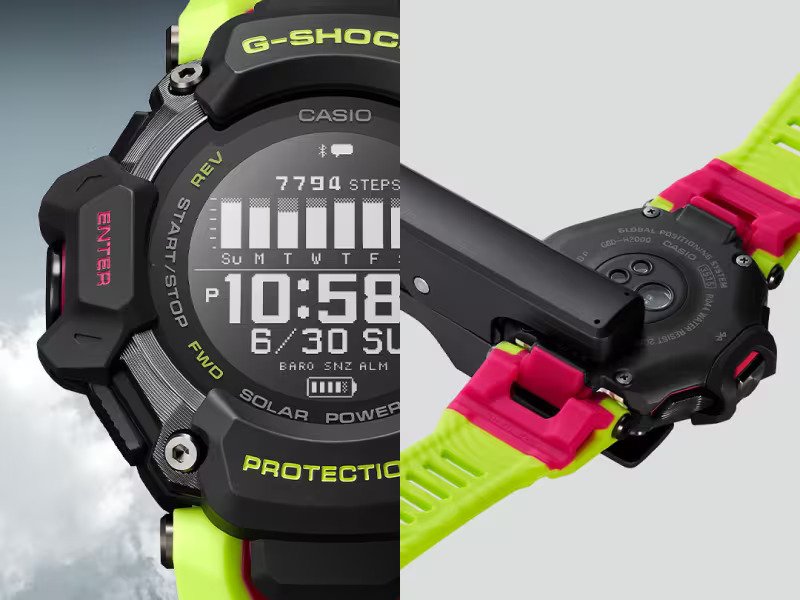
■ Use of biomass plastics
Biomass plastics made with raw materials from castor seeds and corn are used in the bezel, case, and band. Produced from renewable resources, biomass plastics are expected to help promote the shift to circular economies and curb CO2 emissions.
Specifications
